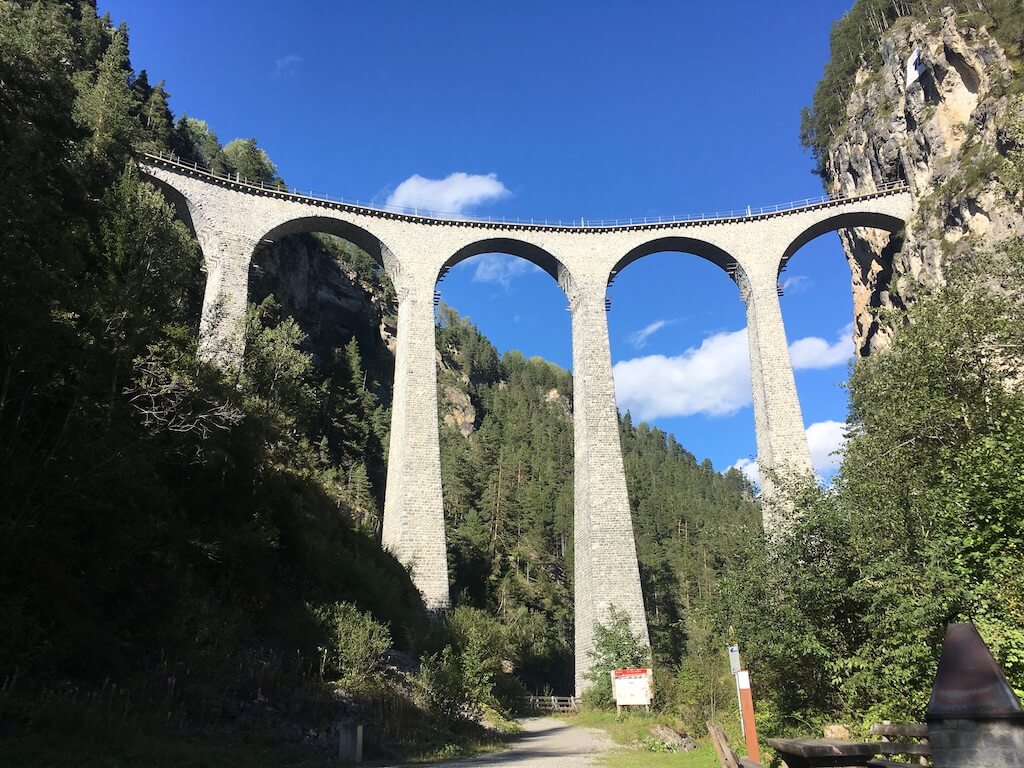Date of visit: September 13 and 14, 2017
Due to a number of coincidences, I found myself sightseeing the world heritage sites to the fullest, even though I wasn’t on the train at all.
Coincidence No.1: Albula line, I met that stone bridge on the way to St. Moritz.
I travel mostly by rental car because I like to drive, but when I drive in Switzerland, I often find that I would prefer to take the train relatively often. Speaking of trains in Switzerland…
1. good scenery (driving in a place with a better view than a car)
2. easy to pass through steep mountain passes (though it takes time)
The first two items that come to mind are I guess the disadvantage is « high price ».
Among the UNESCO World Heritage Sites in Switzerland, there is one that is related to railways. It is the « Rhaetian Railway ». (From a brochure I got in the beautiful village of Poschiavo)
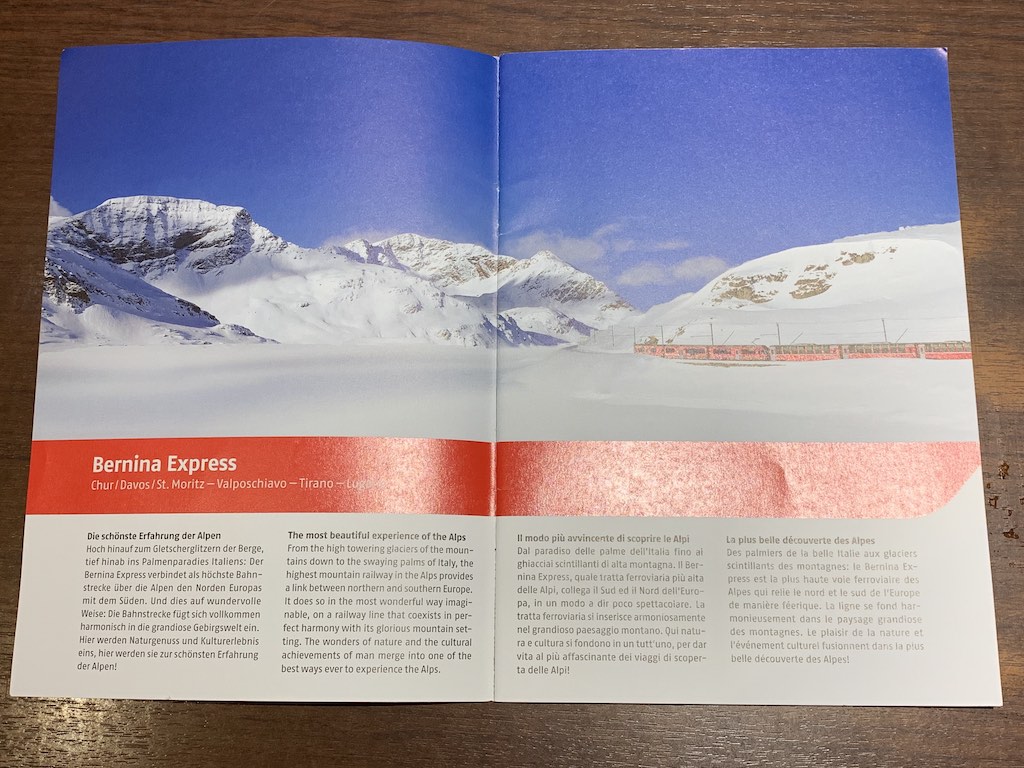
It is not easy to have an incentive to take a train because it is basically a car trip. However, it is a world heritage site. I want to experience it in some way. So the first thing that comes to mind is this stone bridge « Landwasser Bridge ». I’m sure many of you may have seen it in pictures.
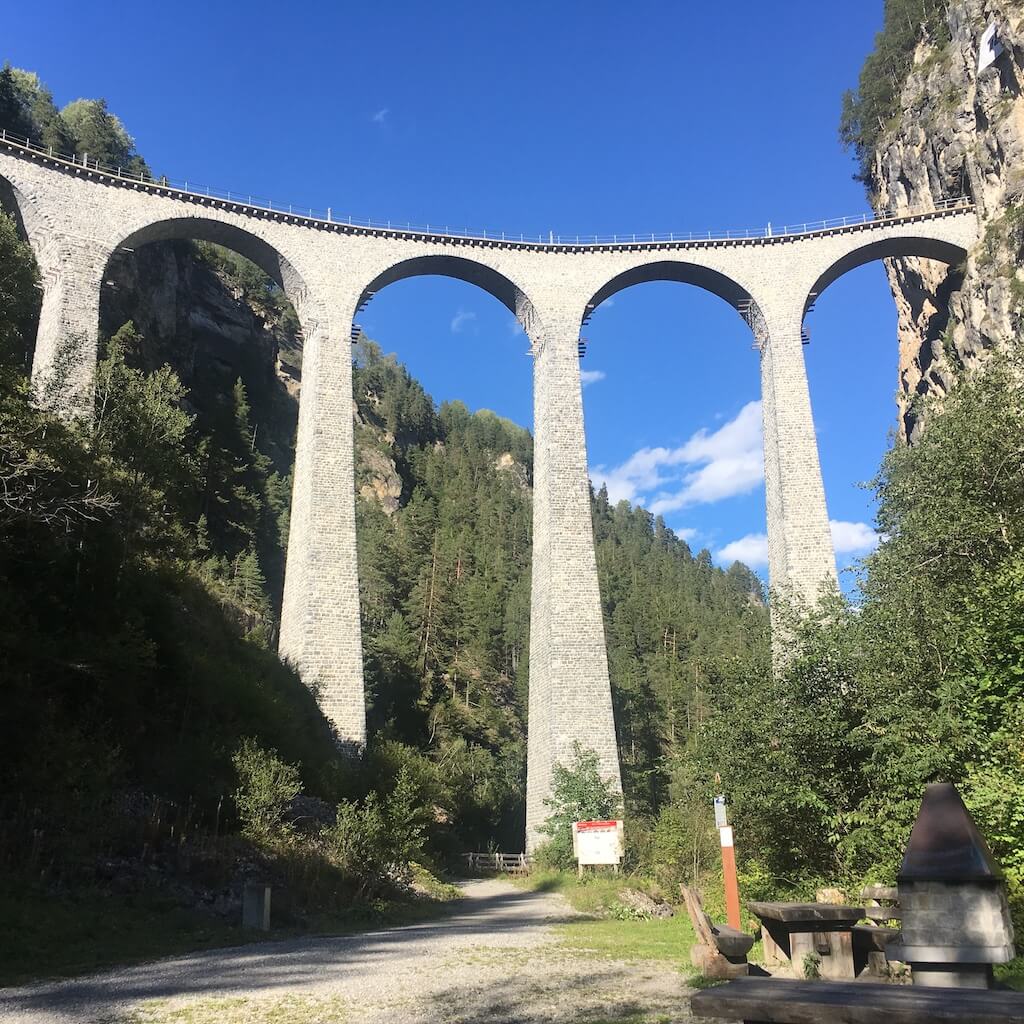
I would love to see the location of this most famous stone bridge on the Rhaetian Railway up close. So, before I left, I used Google Maps Street View to identify the detailed location, the location of the most famous stone bridge, and marked it with my favorite star. We also confirmed that we would need to follow an unpaved, bush-chased road with only one car allowed to pass to reach the location, but based on our previous experience, we thought we would have no problem getting there.
Here’s a Google map. There is a parking space at the marker, and it takes about 10 minutes to walk from here, but we confirmed that the road stretching north from the marker to the bridge (Landwasserviaduct) is not a road that cannot be driven on.
However, the main purpose of this trip was to visit the most beautiful villages in Switzerland, so it was a rather low priority for me to go there if I stop by nearby.
After we finished our tour of the beautiful German-speaking villages, we decided to stay in an Italian-speaking area for the next day. As usual, we searched on Booking.com and decided to stay in a town called Pontresina, a little far from St. Moritz. As a result, I decided to stay in Pontresina, which is a little bit far from St. Moritz. If so, we could stay here for half a day next day and take the train. I didn’t have much information, but I could check it on the day (next day). So I decided that I wouldn’t have to go all the way to see the stone bridge I had bookmarked and hurried towards the inn.
However, this mountain pass from German-speaking area to St. Moritz was the route of Retish Railway! In fact, I didn’t notice it at all at first, even though I had specified a route search on Google Maps for the way to Pontresina.

The reason I noticed it was because I was driving along the road and happened to spot the Landwasser Bridge. I thought it might be a good place to stop somewhere to check it out, and as I was going along, I found out from a sign on the road that there was a Röttisches railway station nearby. Since I had enough time to go to the hotel, I decided to gather some information at this station.
By the way, the following is the map I got in Poschiavo on the next day 14th. Illustrated map near Landwasser Bridge.
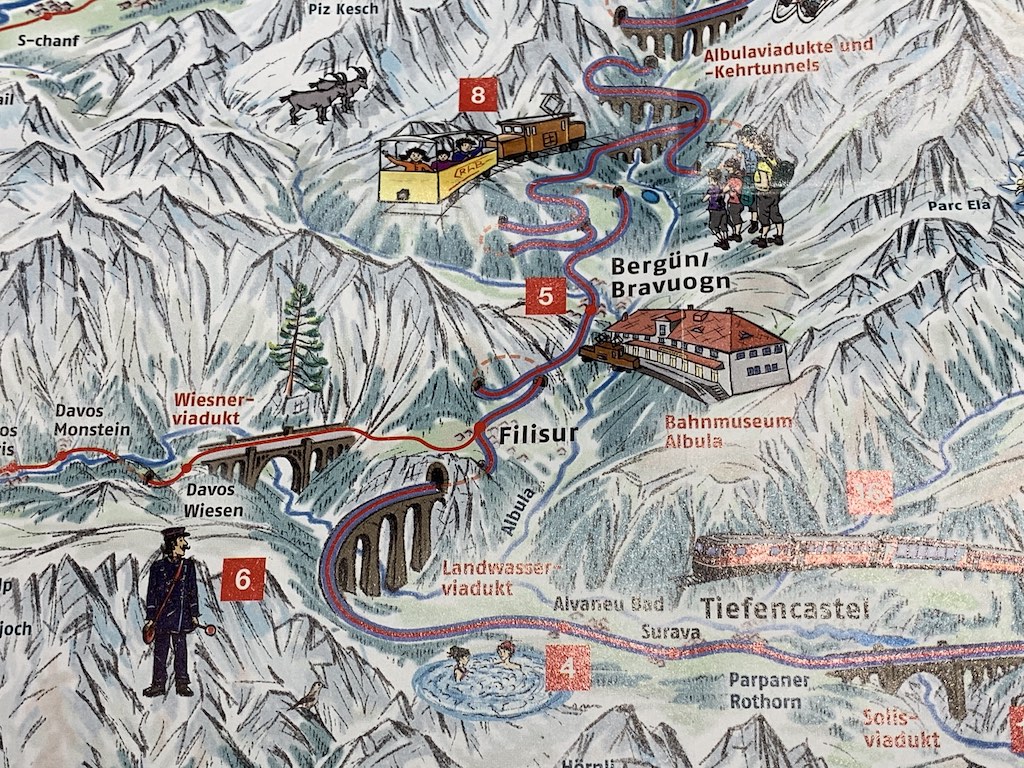
This station was located in Filişur, on a hill with a very nice view, and although I found out that this station was indeed a Rhaetian railway station as I thought, I honestly couldn’t get much useful information at the station.
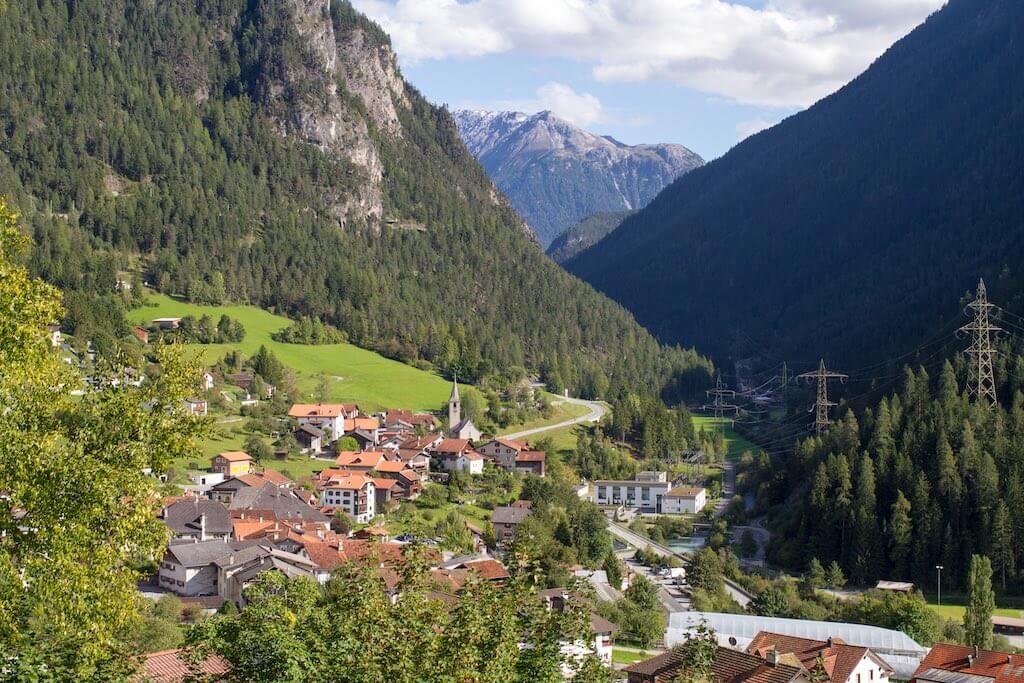
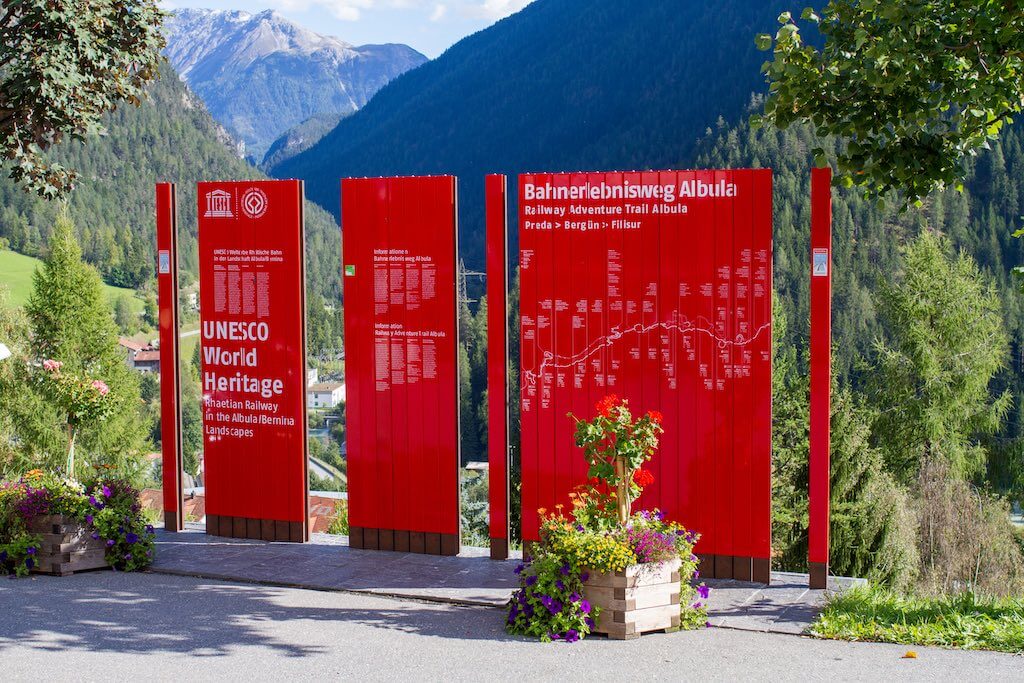
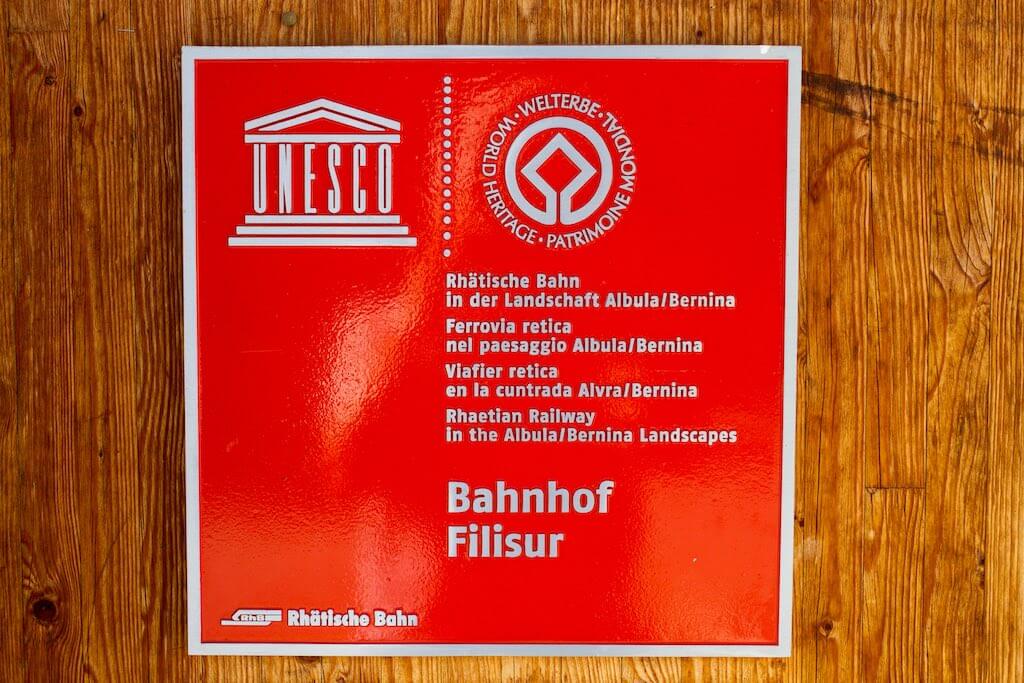
But once again, the location of the Landwasser Bridge, which I bookmarked beforehand, is very close to this station, only 5 minutes away from this station. I had to go back a little, but I decided to head there as soon as possible.
As expected, the road is small enough for one car to pass. It is not paved. However, there must be a lot of people who go there by car. I proceed without worrying about what to do if an oncoming car comes.

We got to the very end of the road, left the car once and walked the rest of the way. It took us about two minutes to walk from where we parked the car, and we were able to reach right under the stone bridge of our destination. I was so impressed!
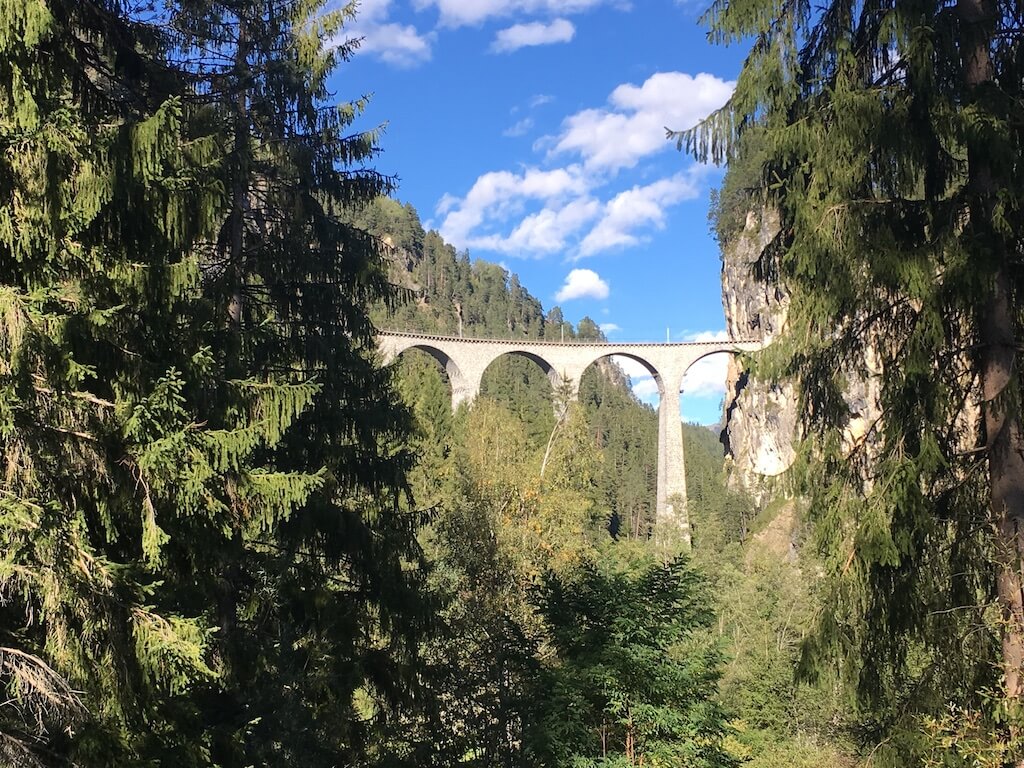

This area is also a hiking trail, and I saw some people walking up here. I’m glad I didn’t encounter them when I was driving through the ruts in my car.
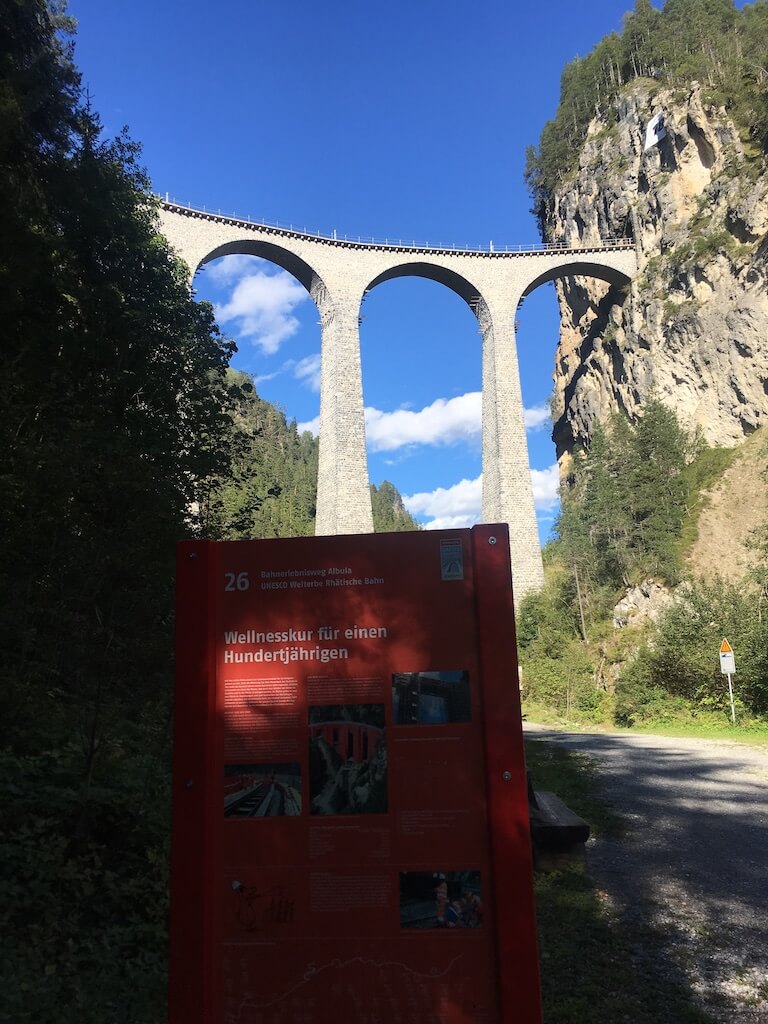
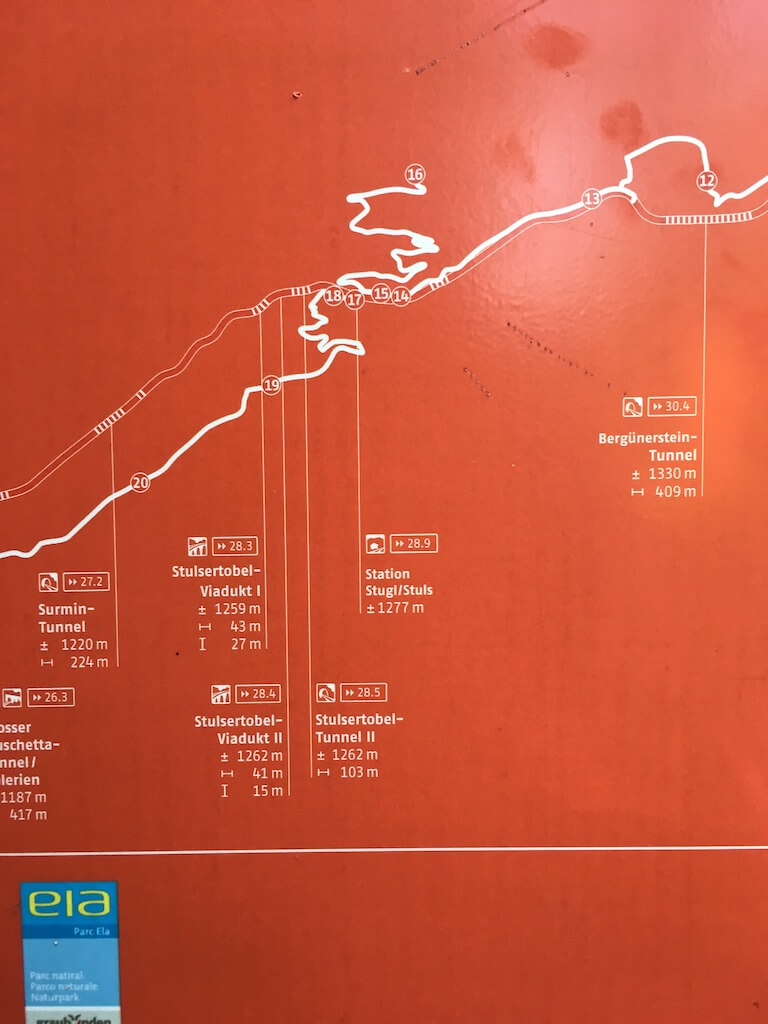

Unfortunately, I wanted to take a picture of the train actually running on this stone bridge, but I couldn’t see it at the wrong time. However, I could see the train crossing this bridge from a distance before I arrived here.
We were lucky enough to see the stone bridge we wanted to see, and from here we went over the Albula Pass to St. Moritz. We drove beside the railroad track several times, saw the train actually running on the track, saw stone bridges other than Landwasser Bridge, and it was a very enjoyable drive.
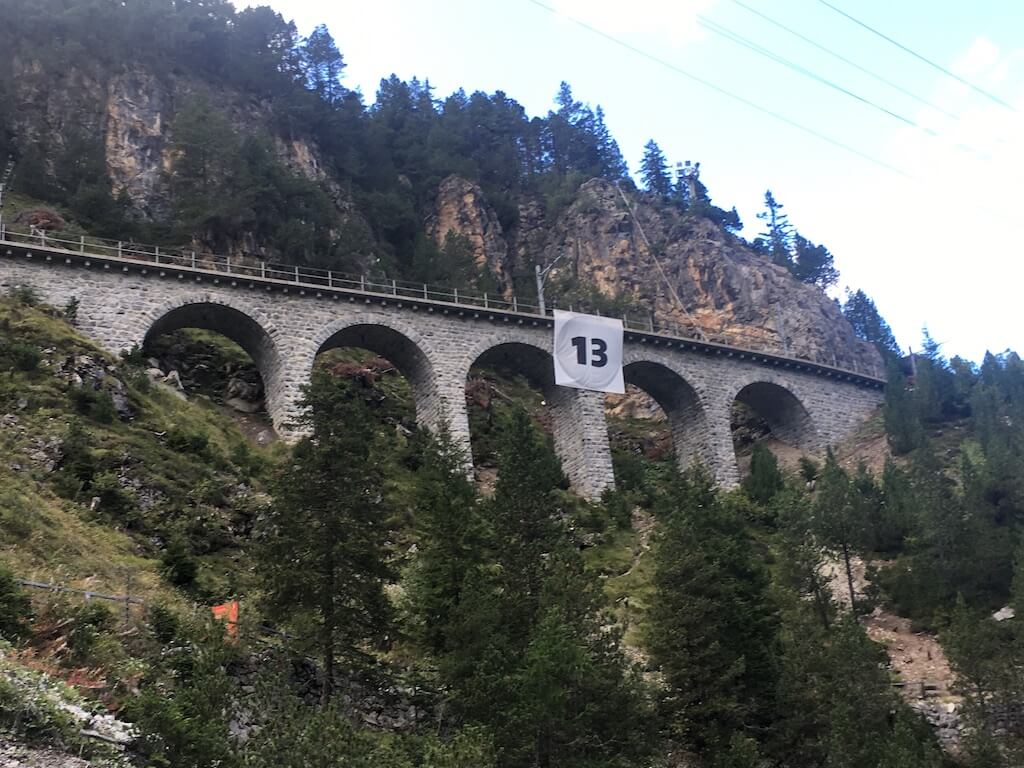

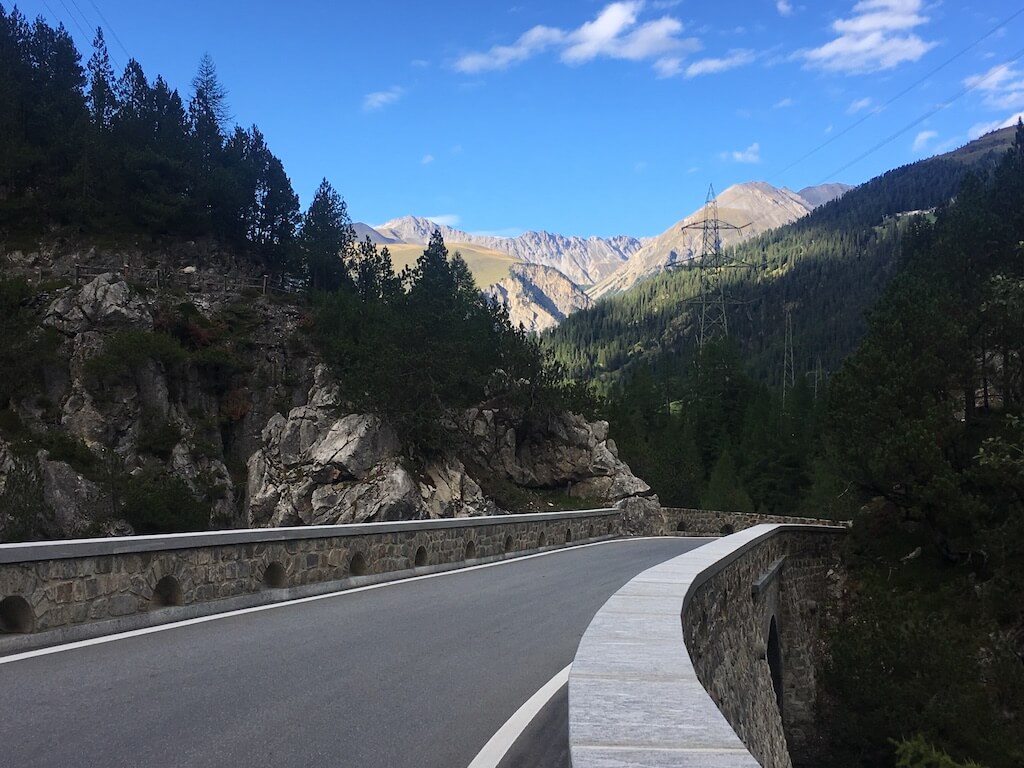
Coincidence #2: The road to the beautiful village of Poschiavo is exactly the Bernina line!
The coincidence of the Rhaetian Railway was not only on the 13th to St. Moritz. It was also on the 14th, the next day.
The road from Pontresina, where we were staying, to Poschiavo, one of the most beautiful villages, was the highlight of the Bernina line.
In the beginning, I thought I would leave the car in Pontresina, where I was staying, and take this train for half a day if I had time, and I could check the details at the station. In the end, I decided not to take the Bernina train for half a day in Pontresina, because it was going to be a long trip, and I wanted to go to Poschiavo, the next destination of the tour of beautiful villages. To get to Poschiavo, both trains and cars take almost the same route through the Bernina Pass.
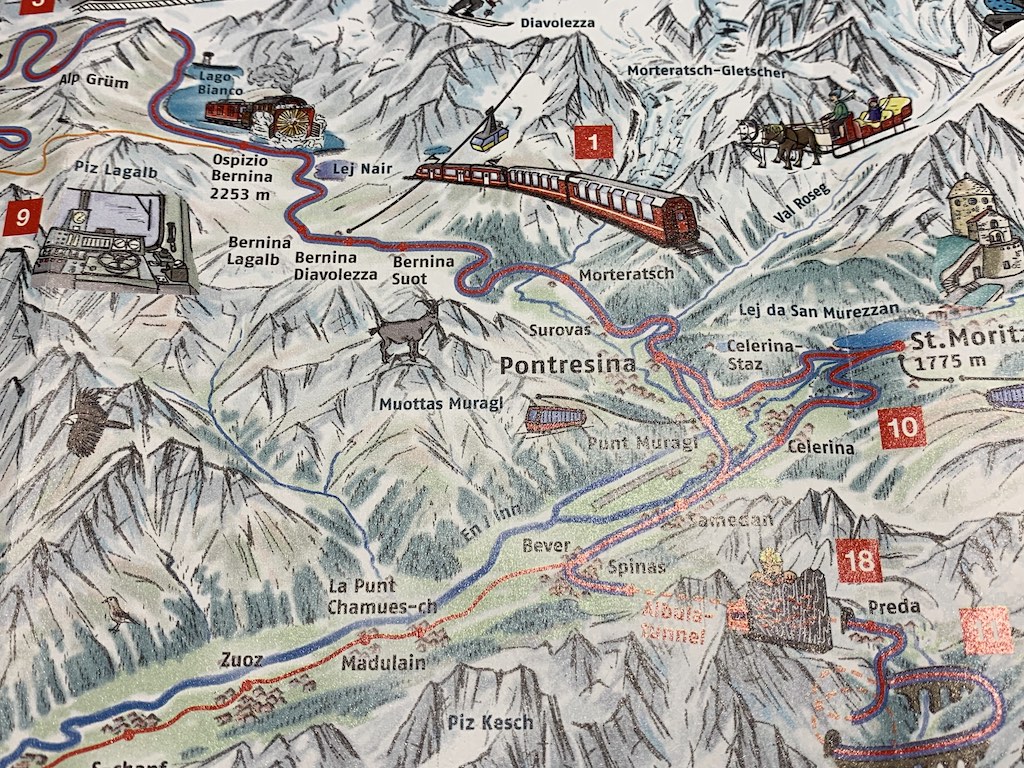
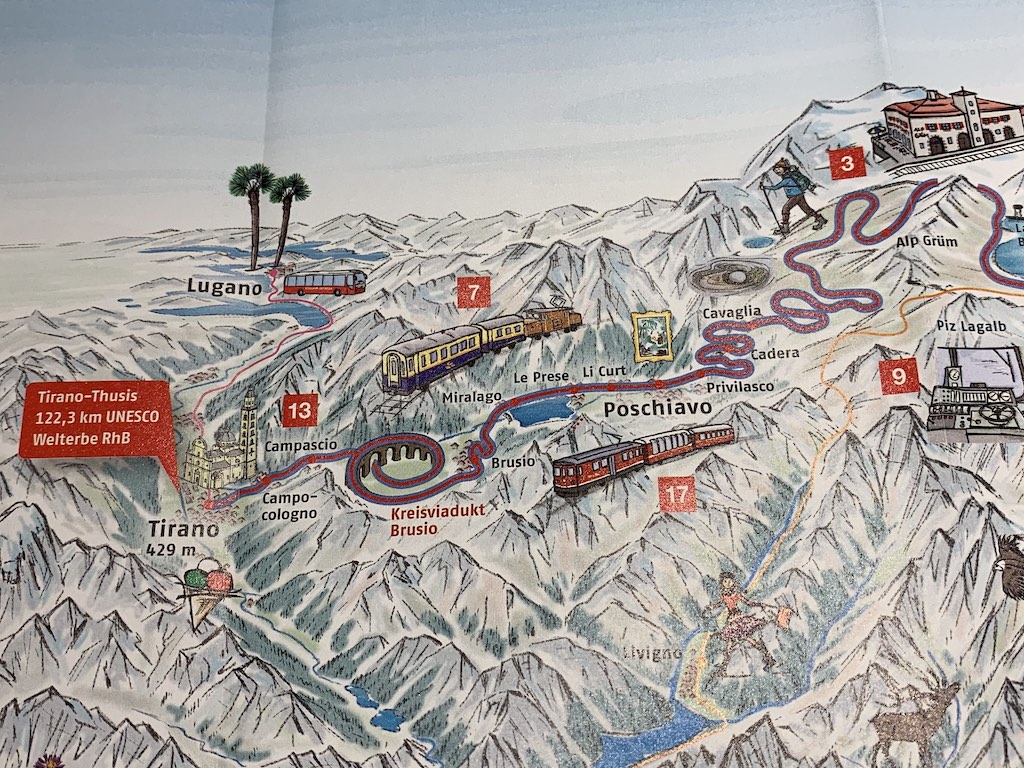
But the real disappointment was that the weather on the Bernina Pass was not good. It wasn’t raining, but it was so foggy that we couldn’t see anything around the pass. It was quite scary to drive. The road was relatively wide and easy to drive on the way up, but on the way down, we had a hard time moving forward because of big trucks. Because I was allowed to pass on the way, I managed, but it was still a thrilling drive.
For more information about the beautiful village of Poschiavo, please see the following article. Information about the Bernina line, brochures and maps were obtained in this village.
On the other hand, from Poschiavo it was downhill all the way to Tirano, but the road was relatively gentle and easy to ride.

On the way here, there is also the famous stone bridge « Ponte Brusio » with its spiral winding. We could see it clearly when we were driving, but unfortunately we couldn’t take a picture of this bridge because of the surprisingly heavy traffic in this area, and also because we couldn’t find a good photo spot, plus it was hard to find a parking space. But it turns out there was a parking lot right near the photo! Shocking!
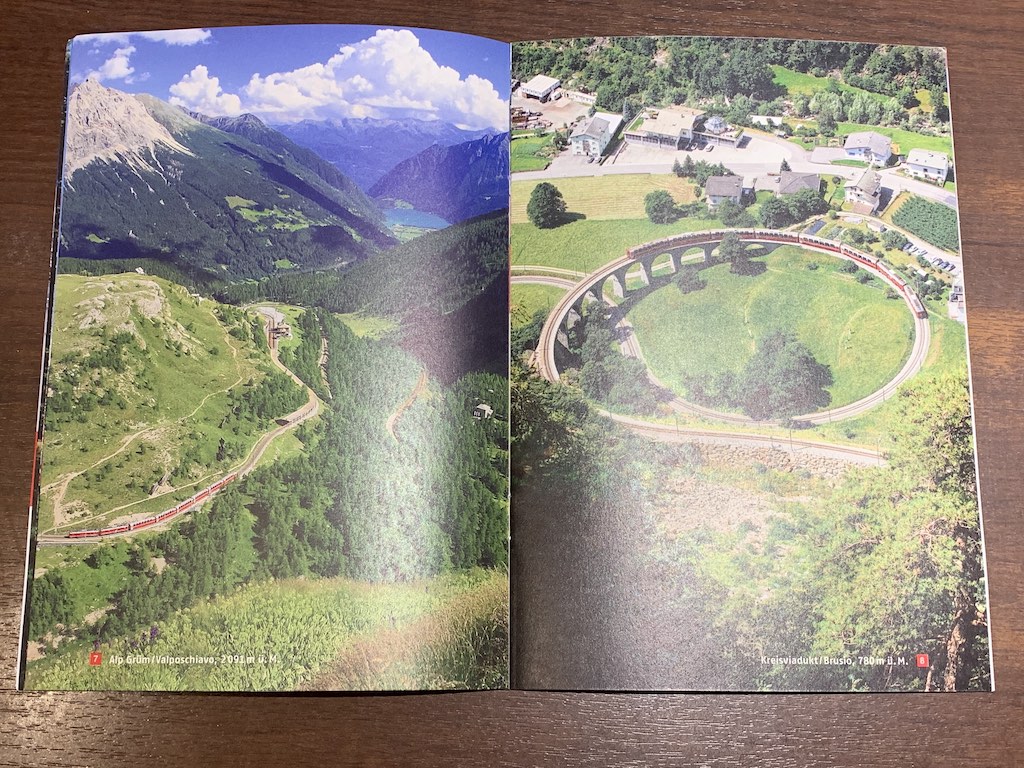
I think it was about 10 minutes from the end of the Kuru Kuru to Tirano in Italian territory. We only passed through the town of Tirano, but it seemed like a very atmospheric town. It seems to be a city that is well worth a leisurely stop and stay.
Coincidence #3: The Bernina bus route also passes through
After this, we headed west along the Italian National Road to a beautiful village on the shores of Lake Lugano, which is actually the route of the Bernina Bus. It seems to run between Lugano and Tirano.
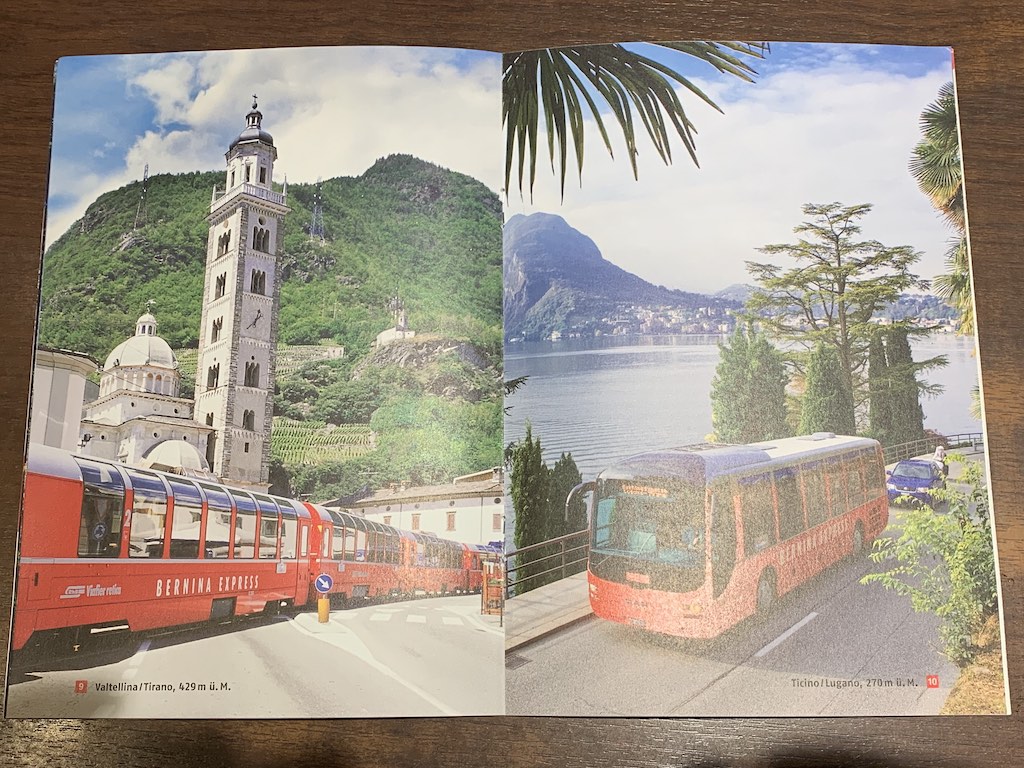
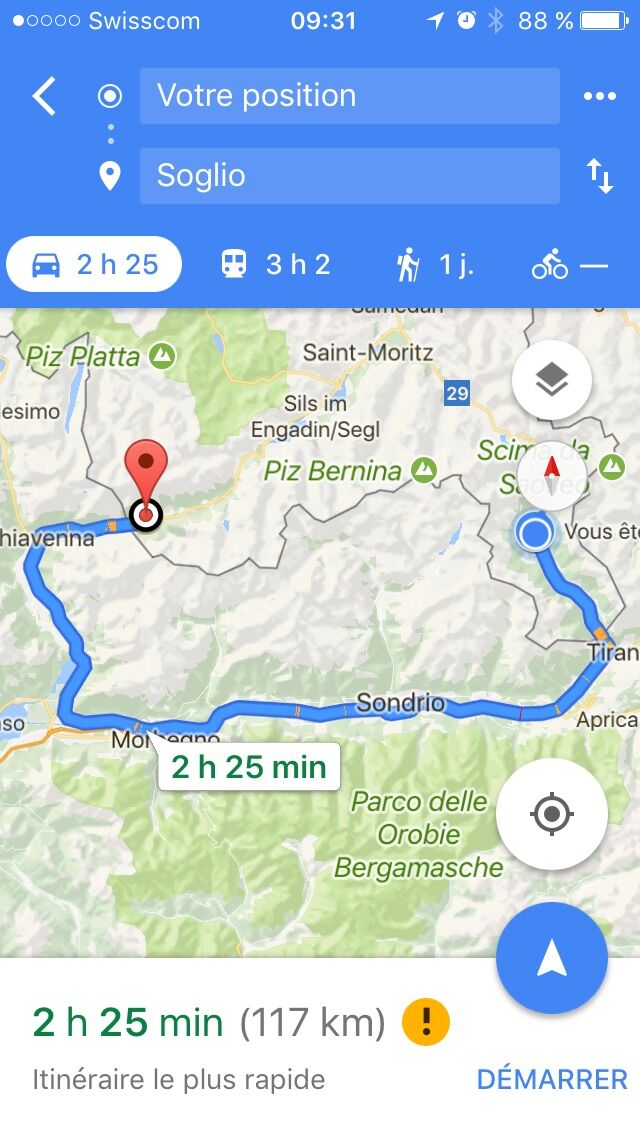
But honestly, I wonder if the Bernina bus route is boring. Not really? Would it be interesting if I didn’t have to drive it myself?
In any case, I was able to do unexpected world heritage sightseeing during the movement of the beautiful village tour. But next time, I’d like to take a train.
